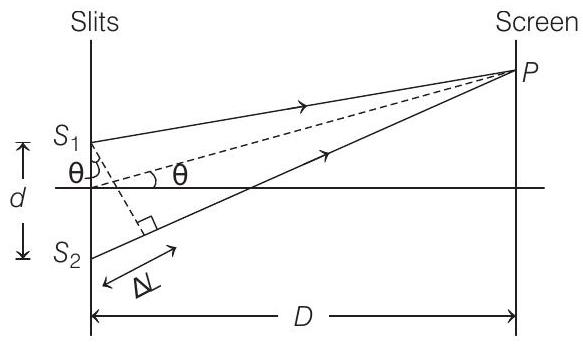Optics 6 Question 8
9. A planet is observed by an astronomical refracting telescope having an objective of focal length
(1992, 2M)
(a) the distance between the objective and the eyepiece is
(b) the angular magnification of the planet is -800
(c) the image of the planet is inverted
(d) the objective is larger than the eyepiece
Fill in the Blank
Show Answer
Solution:
- Key Idea In a YDSE, path difference between 2 rays, reaching at some common point

For small value of
So, path difference
For a bright fringe at same angular position ’
Hence, path difference is an integral multiple of wavelength of light used.
Here,
So, with light of wavelength
and with light of wavelength
Now, choosing different integral values for
and for
These values lie in given interval






